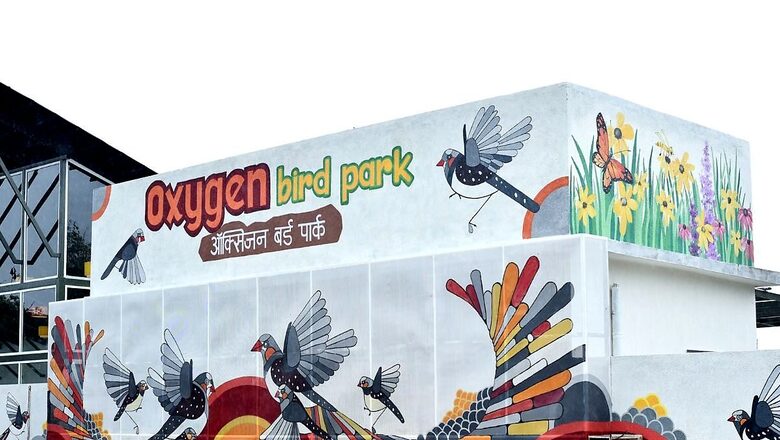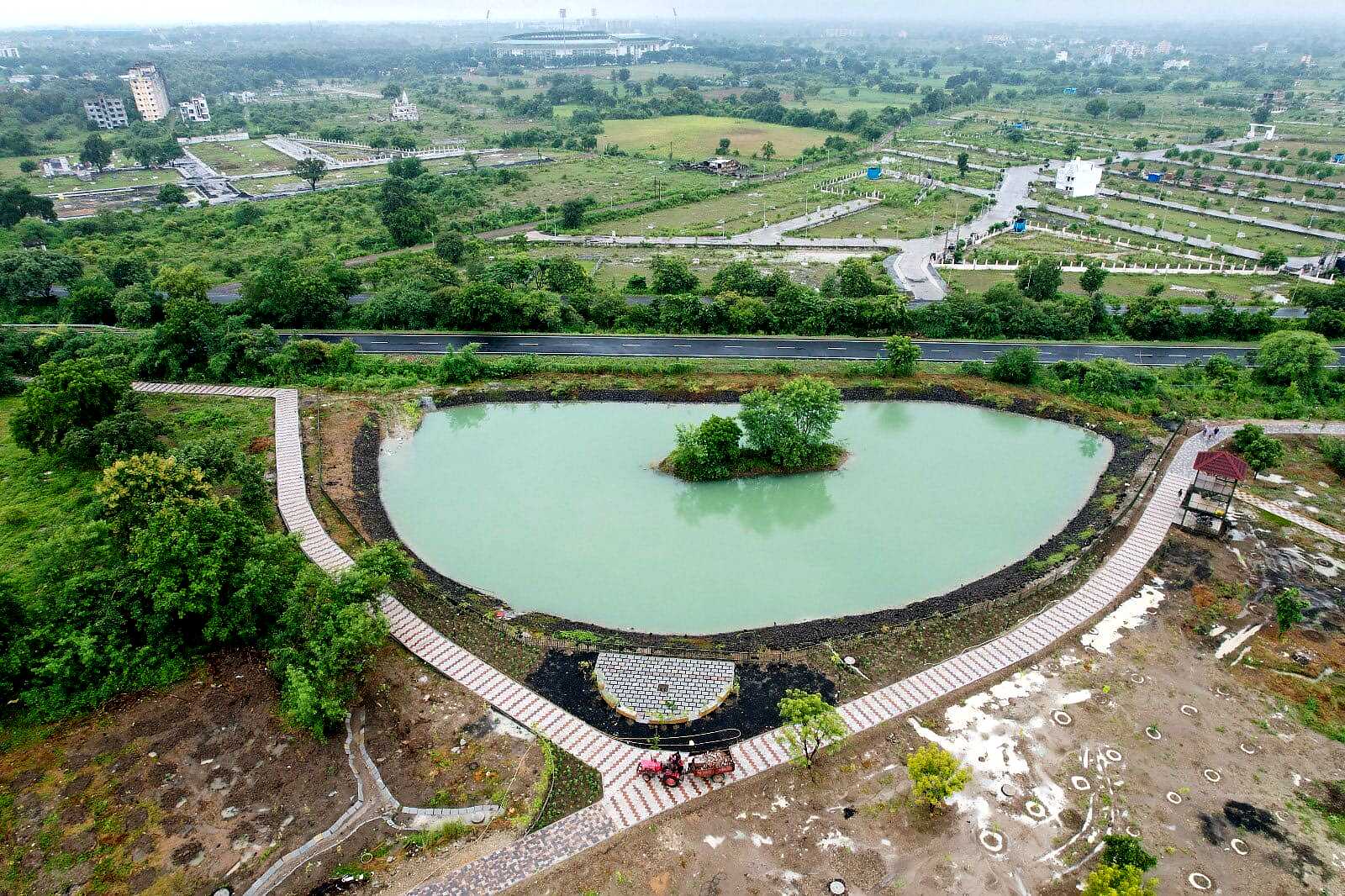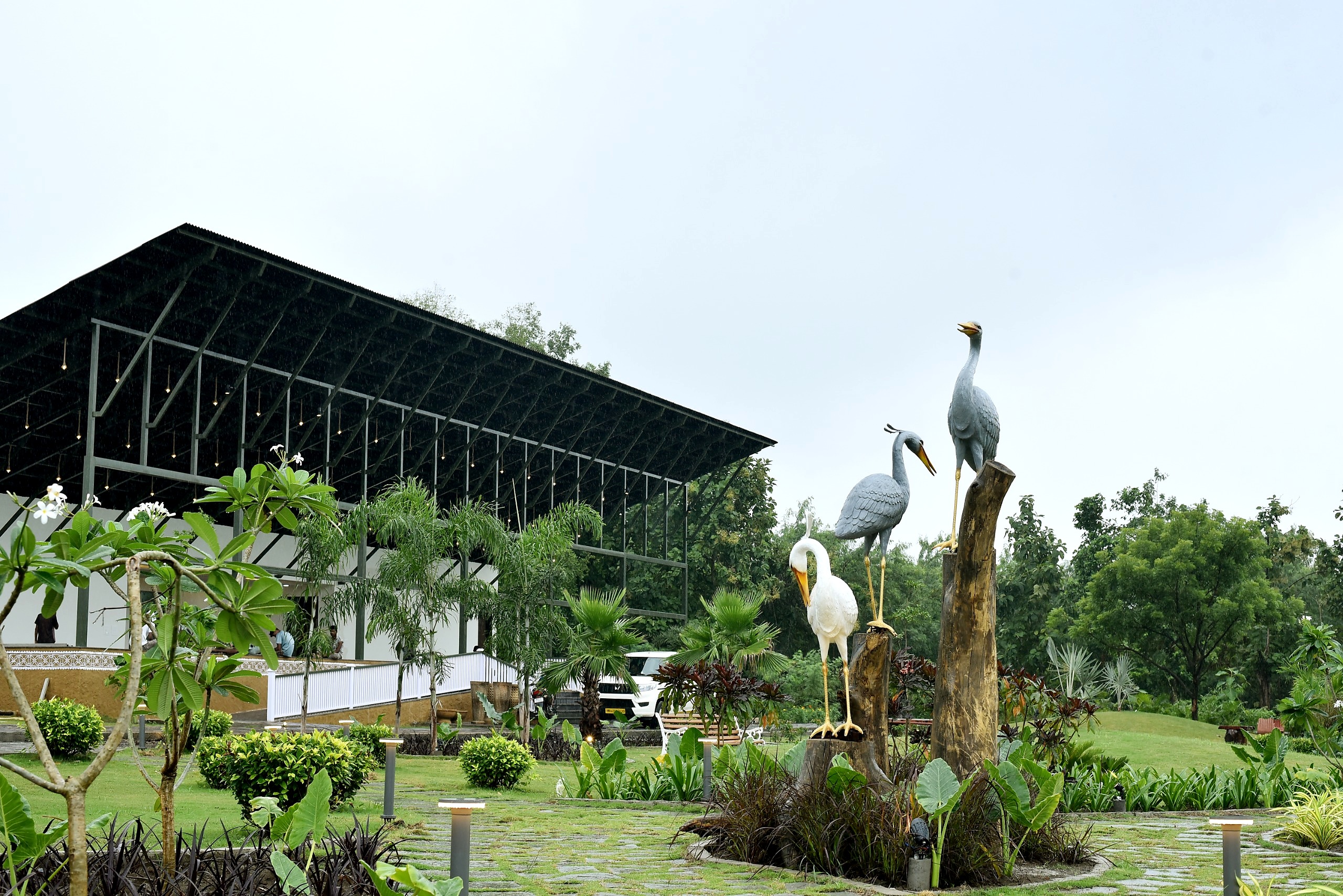
views
The National Highways Authority of India (NHAI) has come up with the first-of-its-kind ‘Oxygen Bird Park’ in Nagpur which was designed keeping in mind the wide variety of bird species and plants found in central India.
The park is the brainchild of Union minister Nitin Gadkari, who directed Regional Officer Nagpur to develop it on NHAI land for observing the wide variety of birds found in central India. The vision was to establish a green space and provide a safe and natural habitat for all species.
Gadkari will inaugurate the park, also called Amrit Mahotsav Park, in his Lok Sabha constituency on Saturday. It is located at Jamtha clover leaf on NH-44 near the Jamtha International Cricket Stadium. Built at an investment of around Rs 14 crore, it lies along the Nagpur-Hyderabad (NH-44) section and spans an area of 8.23 hectares.
A key aspect of the park is its focus on sustainability. Fast-growing and oxygen-producing trees have been planted to help reduce air pollution and promote a healthier environment, with the Social Forestry Division of Nagpur playing a crucial role in developing and maintaining these green spaces.

The bird park will feature several distinct areas aimed at conservation and ecological enhancement. There are rare and endangered trees that are native to central India, including the vulnerable Indian Bael, Gum Karaya and the endangered Yellow Flame of the Forest.
Speaking to News18, an official from NHAI explained that “the park aims to serve not only as an oxygen-producing zone but also as a flourishing habitat for diverse bird species”. “To ensure that birds have sufficient food from the plants, fruit trees were planted that will be exclusively for the birds,” the official said.
The Idea And Its Development
The vision was to establish a green space to provide a safe and natural habitat for a wide variety of bird species. Designed to mimic natural ecosystems, the park aims to conserve both local and migratory bird populations.
This initiative, the official added, has been included as an additional work in the broader infrastructural project of developing a four-lane standalone ring road around Nagpur city, with the park located at the clover leaf intersection near the Jamtha International Cricket Stadium.
The project, which integrates environmental sustainability and recreational facilities, was formally approved in March 2023 at a cost of Rs 14.31 crore.
For developing the park, the NHAI engaged a bio-diversity consultant who has studied the site and recommended development strategies to enhance the biodiversity of the land. The study includes indigenous tree species such as neem, bamboo, banyan, and peepal, which will create dense foliage.
The park has been enriched with a variety of fruit-bearing plants — a good food source (jaamun, mango, guava, bel, tamarind, fig, khirni, pimpal, custard apple, amla, jackfruit); oxygen-producing species and medicinal plants (kadam, bel, jaamun, adulsa, neem, behada).

These efforts aim to increase the ecological value of the area while providing essential ecosystem services.
“The bird park habitat is designed to attract birds and pollinators while providing excellent nesting materials. The initiative also focuses on conserving endangered species like bija, haldu, and chaar,” the official added
The Park
The Oxygen Bird Park is spread across 8.23 hectares, including 2.5 hectares dedicated to social forestry. The park also serves as a recreational space for locals and tourists.
Beyond its ecological role, the project emphasises the creation of a welcoming environment to attract and sustain various bird communities.
Additionally, the park features 30 water-recharge pits designed to collect and absorb runoff, ultimately helping to raise the groundwater level.
“The park features a variety of facilities, including a food court, restrooms, well-designed walking paths, jogging and cycling tracks, watchtowers, amphitheatre platforms, and a dedicated play area for children. A naturally formed pond, harmonising with the landscape, serves as a key highlight of the park,” the official explained.
The pond, they added, will be home to various lotus and water lilies, providing habitat for water birds and recharging underground aquifers. It will also create a microhabitat with increased humidity.
Since the waterbody is deep, it has the potential to attract both resident and migrant ducks. The migrant ducks attracted are both diving ducks like pochards and dabbling duck.
The park also has a reed bed located behind the pond which will provide an ideal habitat for birds such as waterhens, moorhens, and reed warblers, especially during migration.
The bambusetum area will feature native Indian bamboo species that will help reduce dust and noise pollution, absorb vehicle emissions, and improve soil quality through its leaf litter.
Behind the lake, native Indian palms such as phoenix date palm and toddy palm were planted that will offer nesting sites for various bird species and small mammals, and support species like hornbills and weaver birds.
“The park’s flora includes a variety of trees, reeds, aquatic plants, shrubs, and bushes specifically chosen to support local wildlife and enhance biodiversity. Notable species include Neem, Indian Coral Tree, Water Lilies, Lotus, Wild Jasmine, and Karonda,” the official added.
The entrance gate showcases an attractive architectural design, further enhanced by carefully planned landscaping to elevate the visual experience.
Additionally, the project involves collaboration with the Social Forest Department, with around two hectares set aside for dense vegetation development, focusing on planting oxygen-generating tree species.




















Comments
0 comment